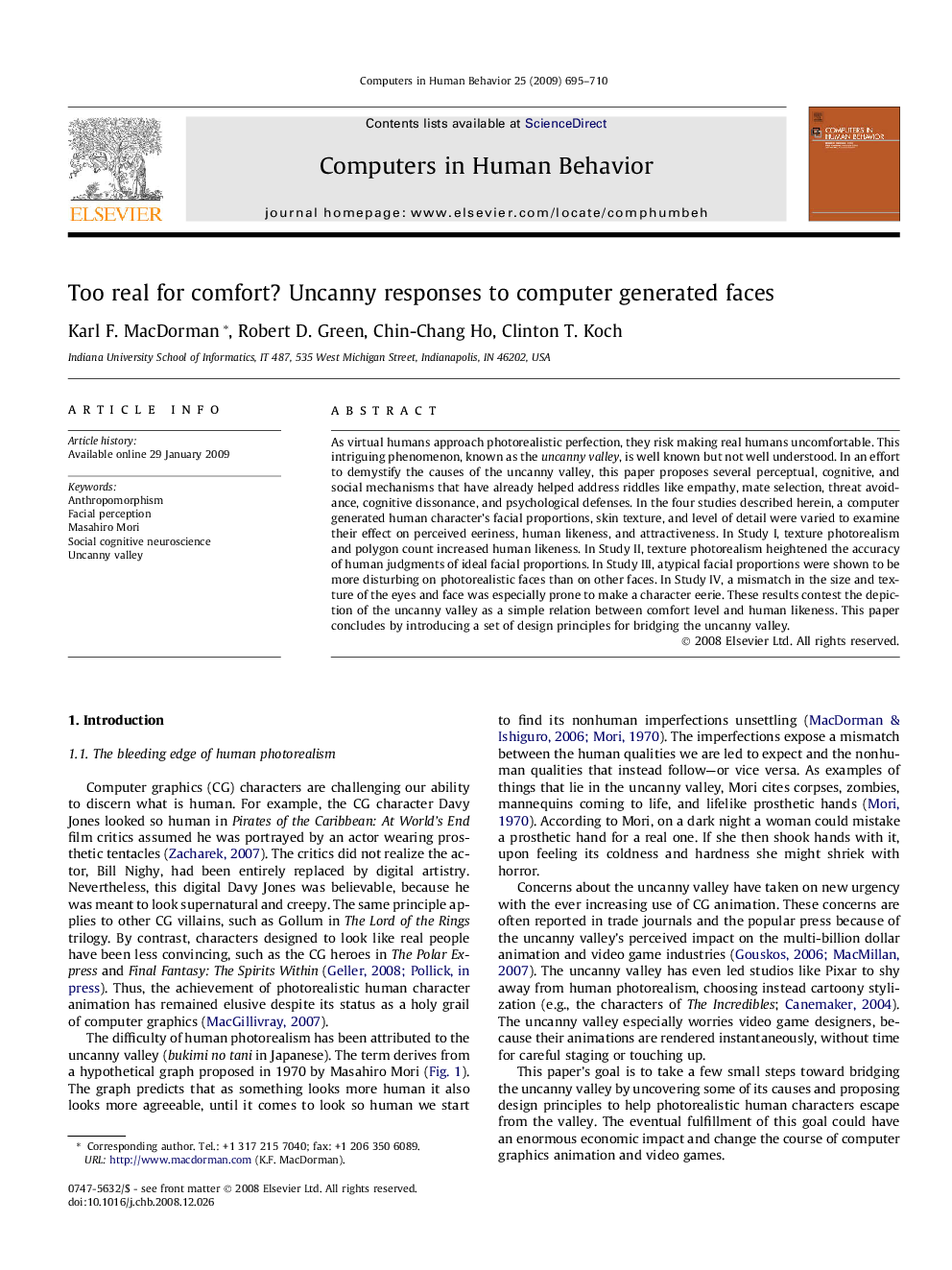| کد مقاله | کد نشریه | سال انتشار | مقاله انگلیسی | نسخه تمام متن |
|---|---|---|---|---|
| 352170 | 618490 | 2009 | 16 صفحه PDF | دانلود رایگان |

As virtual humans approach photorealistic perfection, they risk making real humans uncomfortable. This intriguing phenomenon, known as the uncanny valley, is well known but not well understood. In an effort to demystify the causes of the uncanny valley, this paper proposes several perceptual, cognitive, and social mechanisms that have already helped address riddles like empathy, mate selection, threat avoidance, cognitive dissonance, and psychological defenses. In the four studies described herein, a computer generated human character’s facial proportions, skin texture, and level of detail were varied to examine their effect on perceived eeriness, human likeness, and attractiveness. In Study I, texture photorealism and polygon count increased human likeness. In Study II, texture photorealism heightened the accuracy of human judgments of ideal facial proportions. In Study III, atypical facial proportions were shown to be more disturbing on photorealistic faces than on other faces. In Study IV, a mismatch in the size and texture of the eyes and face was especially prone to make a character eerie. These results contest the depiction of the uncanny valley as a simple relation between comfort level and human likeness. This paper concludes by introducing a set of design principles for bridging the uncanny valley.
Journal: Computers in Human Behavior - Volume 25, Issue 3, May 2009, Pages 695–710